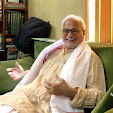A Brief History of Evolutionary Spirituality – by Tom Huston ... By evolutionarymystic March 10, 2010
Foremost among these were the Indian philosopher-sage Sri Aurobindo, the French philosopher Henri Bergson, and the French paleontologist and Catholic priest Pierre Teilhard de Chardin. Other key figures included the American essayist ...
Yet it was the work of the great Sri Aurobindo that, while following a similar thread to Bergson and Teilhard, brought an entirely new dimension to this burgeoning field— namely, translating the concept of spiritual evolution into a spiritual practice. After completing his studies in literature and philosophy at Cambridge British Empire , but eventually left the freedom fight to devote his life to exploring liberation of an altogether different kind.
After experiencing a deep spiritual awakening, Aurobindo’s consciousness opened onto a vision of human possibilities that saw the attainment of nirvana—typically held to be the goal of all mystical pursuits—as merely the beginning of a personal engagement with the evolutionary force that has been driving the cosmos forward since the dawn of creation. Leading his spiritual community in the practice of “integral yoga,” Aurobindo was the first to synthesize the modern understanding of evolution with the timeless revelation of enlightenment, and pioneered the idea that human beings are capable of aligning their lives with the trajectory and purpose of the universe itself.
Sri Aurobindo’s Marriage—a discussion by Raman Reddy pertaining to a few aspects in context of the latest biography published by the Columbia University Press. Comment posted by: Kepler
Defining “succeed” as inner spiritual realization, that's no doubt true. Defining it as transformation of nature and life on earth, then other things can also assume a place. E.g. Sri Aurobindo spent quite a bit of time expressing himself in published writings.
Ennapadam Panchajanya By Durgadevi
In my view the most important and seminal book on India’s Freedom Movement that has been published after our independence is the recent book of Smt Radha Rajan titled ‘Eclipse of the Hindu Nation, Gandhi and his Freedom Struggle .” V. Sundaram
.” V. Sundaram
Smt Radha Rajan considers 1893 as an important year in the evolution of our struggle for national freedom. She does so not because Mahatma Gandhi went to South Africa for the first time in his life in the year 1893 but because it was in 1893 that Sri Aurobindo started writing his series of 9 biting articles about the Indian National Congress (INC), titled ‘New Lamps for Old’, in Indu Prakash, a Marathi-English Daily published from Bombay. Sri Aurobindo was a young lad of 21 years at that time and the INC was barely 8 years old! …
Sri Aurobindo came to the right conclusion: “Our actual enemy is not any force exterior to ourselves, but our own crying weaknesses, our cowardice, our selfishness, our hypocrisy, our purblind sentimentalism.”
Sri Aurobindo came to the right conclusion: “Our actual enemy is not any force exterior to ourselves, but our own crying weaknesses, our cowardice, our selfishness, our hypocrisy, our purblind sentimentalism.”
The Congress of that time, was quite intolerant of criticism by Sri Aurobindo and reacted in such a peculiar manner that it pressurized the editors of Indu Prakash to discontinue the series of fiery articles by Sri Aurobindo.
Following the lead given by Sri Aurobindo, the economic rape and plunder of India India India India
Sri Aurobindo was not taken in by the patently pro-British views of Gandhi in his Hind Swaraj and other writings. Sri Aurobindo did not share the view of Gandhi that the devilish evils of colonial administration could be attributed to modern Western civilization which ignored the Christian roots and went on the path of loot and plunder, exploiting most of Asia , Africa and America September 01, 1906 , Sri Aurobindo saw clearly the roots of Christianity and exposed them: …
When Sri Aurobindo was at the height of his powers as a fiery, patriotic political journalist, he wrote a series of outstanding articles on “Passive Resistance” under the general title ‘New Thought’ in his own Journal, ‘Bande Mataram’ from April 11, 1907 to April 23, 1907. Smt Radha Rajan says that Gandhi’s exposition on “Satyagraha” or “Passive Resistance” seems vacuous by comparison with Sri Aurobindo’s writings on “Passive Resistance”. I fully endorse her view that Gandhi could add very little to Sri Aurobindo’s discourse on “Passive Resistance”. Smt Radha Rajan has written, “In typical Gandhi vein he does not give credit where it is due in his HIND SWARAJ, considered by Gandhians to be his seminal work. “
has written, “In typical Gandhi vein he does not give credit where it is due in his HIND SWARAJ, considered by Gandhians to be his seminal work. “

No comments:
Post a Comment